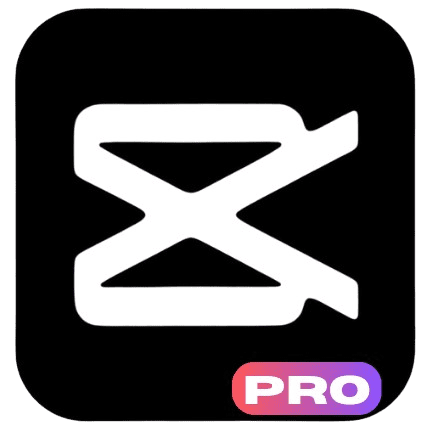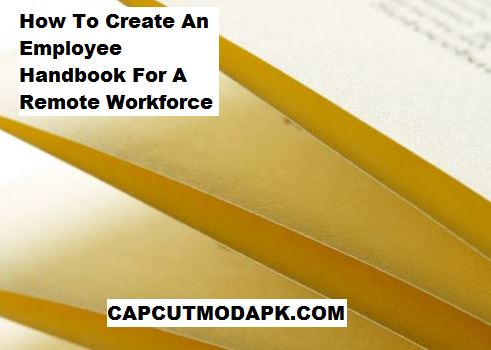How To Create An Employee Handbook For A Remote Workforce: Creating an employee handbook for a remote workforce is essential for any company that has shifted to a virtual work environment. The traditional in-office handbook simply does not meet the needs of remote teams, who may work from different locations, time zones, and cultures. As a result, employers must adjust their approach to ensure that their policies, expectations, and resources are clear and accessible for all employees, regardless of where they are located.
An effective remote employee handbook not only provides clarity on company policies but also sets the tone for the company culture and values in a remote setting. This guide outlines the key considerations for creating a remote employee handbook, addressing topics like communication, work hours, performance expectations, and maintaining a healthy work-life balance. It’s critical to cover all aspects of remote work while keeping the document user-friendly and accessible.
In this article, we will explore how to create an employee handbook that is tailored to the needs of a remote workforce. From establishing a remote work policy to choosing the best software tools for creating the handbook, we’ll cover the critical steps. Understanding how to create an employee handbook for a remote workforce is the first step to building a successful and compliant remote work culture.
Also, Read The Most Common Legal Pitfalls In M&A Transactions
How To Create A Remote Work Policy?
A remote work policy is the cornerstone of any employee handbook for a virtual workforce. This policy sets clear expectations for employees regarding work hours, communication methods, availability, and performance standards. In the context of remote work, a well-defined policy ensures that employees and employers have a shared understanding of what is expected of them, even when working from different locations.
The first step in creating a remote work policy is to define the work expectations. This includes setting clear hours of availability, the frequency and type of communication (e.g., email, video calls, instant messaging), and how work progress will be tracked. If employees are expected to be available for certain core hours, or if flexibility is allowed, the policy should reflect these details. For example, in a remote environment, the company may require employees to be available during a set of “core hours” but allow them to complete their tasks at their own pace outside those hours.
Next, the policy should outline expectations for productivity and deliverables. Since remote employees may not be physically present in an office, it’s essential to establish how their work will be evaluated. Should they adhere to specific deadlines? Will they need to report their progress regularly? Providing clear and measurable criteria ensures that employees understand how their performance will be assessed.
Lastly, a comprehensive remote work policy should address any specific equipment, tools, or resources that employees will need to perform their jobs. This could include providing remote employees with laptops, software licenses, or reimbursement for home office expenses. Defining these expectations upfront helps to avoid confusion and ensures that employees have the tools they need to be successful in their remote roles.
How Do You Create A Simple Employee Handbook?
Creating a simple employee handbook doesn’t mean skipping critical policies or legal considerations. It means presenting this information in a straightforward, clear, and digestible format. When it comes to remote work, simplicity is key. Employees should be able to quickly find the information they need and understand what is expected of them. So, how do you create a simple employee handbook?
The first step in creating a simple employee handbook is to focus on clarity and organization. Break the document into sections that are easy to navigate, such as company policies, employee benefits, performance expectations, communication guidelines, and remote work-specific instructions. Each section should be concise, with a focus on the most important points. Consider using bullet points, short paragraphs, and simple headings to improve readability.
Next, ensure that the language is straightforward and avoids unnecessary jargon or complicated legal terms. Remote employees may not be familiar with the intricacies of office policies, so keeping the language simple helps prevent confusion. For example, instead of using complex language to explain a leave policy, break it down step by step.
Finally, use an intuitive structure for your employee handbook. Start with the most essential information at the top, such as the company’s mission, remote work expectations, and communication protocols. Follow this with sections on employee benefits, work hours, and other guidelines. Providing a table of contents or index at the beginning will also help employees quickly locate the sections they need. A simple employee handbook should be both comprehensive and easy to digest.
What Is The Best Software To Create Employee Handbooks?
When creating an employee handbook for a remote workforce, choosing the right software is critical. The right tools make the process easier, faster, and more professional, ensuring that the final document is not only well-organized but also easy to update and share. So, what is the best software for creating employee handbooks?
One of the most popular options is BambooHR, a cloud-based HR platform that allows companies to create custom employee handbooks. BambooHR’s software helps you organize policies into easy-to-navigate sections and makes it simple to update the document as company policies evolve. It also allows you to store your employee handbook securely online, where remote employees can access it at any time.
Another excellent option is Zenefits. Zenefits offers a comprehensive suite of HR tools that include a custom employee handbook builder. It also integrates with other HR functions, like payroll and benefits management, to ensure a seamless experience for both employers and employees. The software is user-friendly and offers templates that can be customized to meet the unique needs of your remote workforce.
If you prefer a more simple approach, Google Docs or Microsoft Word may be sufficient, especially for small businesses or startups. These tools allow you to easily create, update, and share the employee handbook with your team. However, while these options are cost-effective, they may not provide the same level of integration with other HR functions as more specialized software like BambooHR or Zenefits.
Can ChatGPT Write An Employee Handbook?

ChatGPT, or other AI-powered tools, can help generate content for an employee handbook, but it cannot replace human judgment and expertise. AI tools like ChatGPT can be used to draft sections of the handbook, generate ideas, and even suggest policies based on existing guidelines. However, the final product will need to be reviewed, customized, and tailored to the company’s specific needs.
Using ChatGPT can be a great starting point for creating an employee handbook. For example, you can input prompts like, “What should be included in a remote work policy?” and ChatGPT will generate ideas or even full paragraphs that you can use as a foundation. However, you will still need to ensure the document reflects your company’s values, legal obligations, and culture.
AI tools like ChatGPT are best used in the initial phases of the process, providing suggestions and drafts that you can fine-tune with the help of HR professionals, legal experts, or management. Relying solely on AI to create an employee handbook without human input may lead to a document that doesn’t meet the specific needs of your business or complies with necessary legal standards.
Can AI Create An Employee Handbook?
Yes, AI can assist in creating an employee handbook, but it should not be relied upon entirely. AI can quickly generate templates and suggest common policies that many companies use. It can help you outline key sections, such as an introduction to the company, remote work policies, and employee benefits.
However, AI-generated content often lacks nuance and customization. It may not fully account for unique aspects of your company culture, specific legal considerations, or industry requirements. As a result, while AI can be a helpful tool in generating ideas, the final version of your employee handbook should be reviewed and edited by HR professionals and legal experts.
AI is most effective when used to enhance the efficiency of the handbook creation process, providing a draft that can then be tailored to meet the specific needs of your business. By combining the speed and creativity of AI with human expertise, you can create an employee handbook that is both comprehensive and tailored to your remote workforce.
Can ChatGPT Create A Manual?
ChatGPT can indeed assist in creating a manual, including employee handbooks, training guides, or other types of documentation. It can generate initial drafts, suggest sections or policies, and help outline the structure of the manual. However, similar to employee handbooks, the manual should still undergo human review to ensure accuracy, relevance, and compliance with legal or regulatory standards.
In the case of an employee handbook for a remote workforce, ChatGPT can help you organize the content and draft introductory materials, such as company values, remote work policies, and communication guidelines. However, like any AI tool, ChatGPT’s suggestions should be considered a starting point rather than a final solution.
The role of AI in manual creation is to increase efficiency and reduce the time it takes to generate initial drafts. Once you have an AI-generated document, you can focus on customizing it to suit the needs of your specific business, ensuring that it is clear, concise, and legally compliant.
Conclusion
In this article, we’ve covered how to create an employee handbook for a remote workforce, focusing on the essential steps to ensure clarity, compliance, and effective communication. From crafting a comprehensive remote work policy to choosing the best software tools, each step is crucial for building a successful remote work culture.
Creating a clear, concise, and user-friendly employee handbook is one of the most important ways to ensure that remote employees understand their roles, responsibilities, and expectations. By utilizing the right tools and leveraging AI when appropriate, you can streamline the process while keeping your company’s unique needs in mind.
Ultimately, a well-crafted employee handbook for a remote workforce is essential for maintaining a positive and productive remote work environment. It serves as the foundation for a company’s remote culture and ensures that all employees are aligned with company policies, even if they are working from afar.


